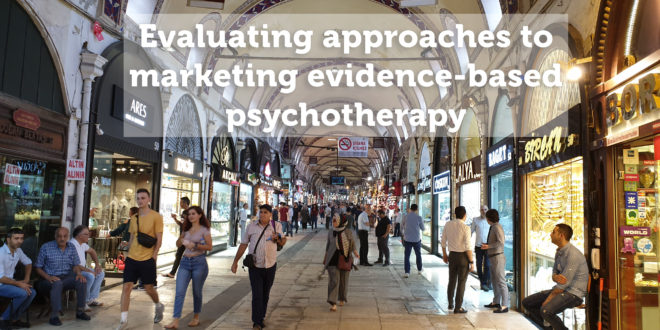Approximately 1 in 4 people will experience an anxiety disorder at some point in their life. Although these conditions are often debilitating, upwards of 50% of people with an anxiety disorder will not receive any treatment during their lifetime. Thus, although clinical science has spent the past 30 years developing and refining effective psychotherapies (in particular, cognitive-behavioral approaches), the overwhelming majority of people experiencing anxiety disorders will not access these treatments. Furthermore, both patients and potential patients report a strong preference for therapy-based treatment over medication, and yet national trends are clear: patients primarily receive medication alone.
Barriers to cognitive-behavioral therapy are multiple and varied. That said, limited knowledge about this approach appears to play a large role in undermining folks reaching this form of treatment. In the present study, we were interested in assessing to what extent lay-people understand what is meant by the term “evidence-based” in regards to treatment approaches. Furthermore, given that previous qualitative work indicates that how treatment approaches are described to potential patients can have a significant impact on their perception of treatment, we evaluated whether varying descriptions of cognitive-behavioral therapy impacted lay-people’s perceptions of this treatment option. In particular, given evidence that academic jargon may be off-putting to potential therapy consumers (i.e., promote the perception that treatment is rigid and not individualized), we evaluated whether describing CBT in lay-friendly terms (i.e., “treatment that works”) and emphasizing its individualized approach would promote more positive perceptions of this approach compared to the formal language routinely used by clinicians and organizations (e.g., “evidence-based”), as well as to a condition where research information is not presented.
First and foremost, results indicated that only about 50% of participants recognized the accurate definition of the term “evidence-based.” This alone suggests that clinical scientists should be thoughtful about the language they are using to describe treatment approaches – as there is a great deal of opportunity to alienate patients when we fail to recognize terminology familiar to us is in fact specialized jargon. More encouragingly, results suggested that participants were swayed by evidence – participants who read descriptions of CBT that noted its research support rated it more positively in terms of credibility and its perceived effectiveness. Although the differences between approaches to describing the research evidence (i.e., lay-friendly vs. academic) yielded more modest effects, there was evidence to suggest that lay-friendly language yielded the most positive perceptions of CBT.
Study results underscore the importance of the language we use in order to describe CBT when marketing to the general public, while also highlighting the potential for research evidence to be persuasive to potential patients. Cognitive-behavioral approaches to treatment for anxiety have the distinct advantage of decades of evidence to suggest they work – we now need to work collaboratively and creatively to let people whose lives are impacted by anxiety know that they exist, and empower them to reach these approaches.
Read the full article: Schofield, C. A., Ponzini, G. T., & Becker, S. J. (in press). Evaluating approaches to marketing cognitive behavioral therapy: Does evidence matter to consumers? Cognitive Behaviour Therapy. doi: 10.1080/16506073.2019.1682654

Pictured: Dr. Casey Schofield
 Cognitive Behaviour Therapy A peer reviewed, multidisciplinary journal devoted to the application of behavioural and cognitive sciences to clinical psychology and psychotherapy.
Cognitive Behaviour Therapy A peer reviewed, multidisciplinary journal devoted to the application of behavioural and cognitive sciences to clinical psychology and psychotherapy.




